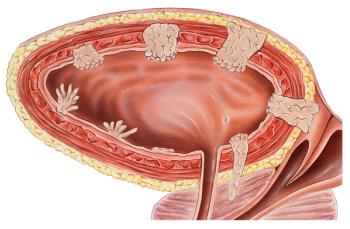
FDA ODAC Panel Votes in Favor of Remestemcel-L for Steroid-Refractory Acute GVHD
The Oncologic Drugs Advisory Committee voted in favor of the available data supporting the efficacy of remestemcel-L in pediatric patients with steroid-refractory acute graft-versus-host disease.
An FDA Oncologic Drugs Advisory Committee (ODAC) voted largely in favor that the available data support the efficacy of remestemcel-L (Ryoncil) in pediatric patients with steroid-refractory acute graft-versus-host disease (SR-aGVHD), according to Mesoblast, the developer of the agent.1
Remestemcel-L has been accepted for priority review by the FDA, with a Prescription Drug User Fee Act (PDUFA) date set for September 30, 2020. Notably, though the FDA will consider the recommendation of the ODAC, the final decision regarding the approval of the product is made exclusively by the agency.
“Steroid-refractory acute graft versus host disease is an area of extreme need, especially in vulnerable children under 12 years old where there is no approved therapy,” Fred Grossman, DO, FAPA, chief medical officer at Mesoblast, said in a press release. “We are very encouraged by today’s outcome and are committed to working closely with the FDA as they complete their review of our submission regarding approval of [remestemcel-L] for this life-threatening complication of an allogeneic bone marrow transplant.”
Data regarding the safety and efficacy of remestemcel-L were collected from 3 different clinical trials, with patients receiving twice weekly intravenous (IV) infusions of 2 x 106 cells/kg over 4 weeks.2 Remestemcel-L was well tolerated in each of the studies, with no safety concerns identified.
In study 275, an expanded access program in 241 children across 50 centers in 8 countries, remestemcel-L was used as salvage therapy for SR-aGVHD in patients who failed to respond to steroid therapy as well as multiple other agents. The primary end point was overall response rate (ORR) by day 28.
The day 28 ORR was 65% in patients who received remestemcel-L. Moreover, survival through 100 days was significantly greater in patients who experienced a response by day 28 (82%) compared with those that did not achieve a day 28 ORR (39%), with a 67% day 100 overall survival (OS).
Further, the phase 3 single-arm GVHD001/002 trial evaluated remestemcel-L in 55 children across 20 centers in the US as a first-line treatment for children who failed to respond to steroids for acute GVHD. Consistent with the previous study findings, a day 28 ORR was achieved in 70% of children. Importantly, this was statistically significant compared to the pre-specified control value of 45% (70.4% vs 45%; P = .0003).
Also similar to study 275, clinical response for the phase 3 trial at day 28 was highly predictive of improved survival through day 100 in those with a day 28 response, compared with those who did not have a response at day 28 (87% vs 47%; P = .0001). Similar predictive value of day 28 was also seen in survival through day 180 (79% vs. 43.8%; P = .003). At day 100, OS was 74.1%, and 68.5% at day 180.
Study 280, a phase 3, randomized, placebo-controlled trial, evaluated the agent in 260 patients, including 28 children, across 72 centers in 7 countries where remestemcel-L or placebo were added to second line therapy in patients with SR-aGVHD who failed to respond to steroid treatment. Of the high-risk children and adults who had the most severe disease stages, the day 28 ORR was significantly greater in the remestemcel-L treated group (58% vs 37%; P = .03) compared to placebo; there was no significant benefit observed with remestemcel-L treatment for standard risk patients. Specifically within the pediatric patients included in this study, day 28 ORR was significantly greater in the remestemcel-L group compared with the placebo group (64% vs 36%, respectively; P = .05).
“This devastating condition has an extremely poor prognosis and there are [currently] no FDA-approved options for children under the age of 12,” pediatric transplant physician Joanne Kurtzberg, MD, the Jerome Harris Distinguished Professor of Pediatrics and professor of Pathology as well as director of the Pediatric Blood and Marrow Transplant Program at Duke University Medical Center, said in the release. “The clinical studies I have directed have demonstrated the potential for this treatment to fill a significant unmet medical need.”
If approved by the PDUFA date, Mesoblast indicated that they anticipate launching the therapy in the US in 2020.
References:
1. U.S. FDA ADVISORY COMMITTEE VOTES NINE TO ONE IN FAVOR OF REMESTEMCEL-L (RYONCIL™) FOR EFFICACY IN CHILDREN WITH STEROIDREFRACTORY ACUTE GRAFT VERSUS HOST DISEASE [news release]. Melbourne, Australia. Published August 13, 2020. Accessed August 14, 2020. http://investorsmedia.mesoblast.com/static-files/ff81b59d-d721-4b95-9cf6-baf6d3570f91
2. Clinical Outcomes Using RYONCIL™ (remestemcel-L) in Children and Adults With Severe Inflammatory Graft Versus Host Disease Published in Three Articles in Biology of Blood and Marrow Transplantation [news release]. New York. Published May 25, 2020. Accessed August 14, 2020. https://www.globenewswire.com/news-release/2020/05/25/2038051/0/en/Clinical-Outcomes-Using-RYONCIL-remestemcel-L-in-Children-and-Adults-With-Severe-Inflammatory-Graft-Versus-Host-Disease-Published-in-Three-Articles-in-Biology-of-Blood-and-Marrow-T.html
Newsletter
Stay up to date on recent advances in the multidisciplinary approach to cancer.


























































































